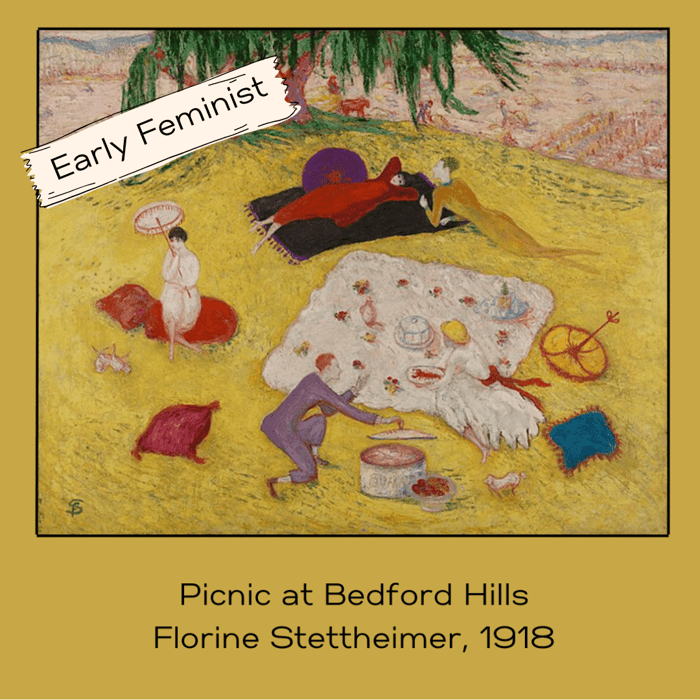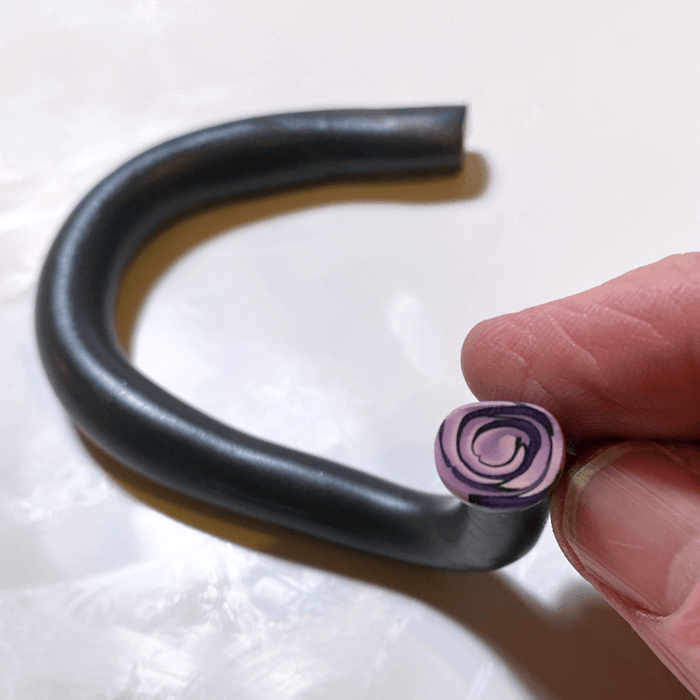Are you looking for inspiration?
Who is this girl? And what inspiration does she bring to today's Polymer Clay Artist?
 Photo of Florine Stettheimer about 1920
Photo of Florine Stettheimer about 1920
Florine Stettheimer (1871- 1944).
Painter, Poet, Costume Designer and Socialite.
Was she a typical hedonist/socialite? Stettheimer’s childhood could certainly have produced such a person: She grew up in a well-to-do family, spending her childhood between New York and Europe. She was one of 5 siblings whose father left them to move to Australia. She studied art in New York, in Germany, and in Switzerland. When WW1 began, the family was initially stranded in Switzerland, finally returning to New York.
At a quick glance, she was a sophisticated sorta-superficial socialite who reveled in the 1920’s New York Art Scene. She and her mom and two sisters lived together and held regular salons where the intellectual and artistic elite of NYC met. Her life appeared to be endless rounds of food, fashion, and entertainment. This bit of her poetry seems on theme:
“I like slippers gold
I like oysters cold
and my garden with mixed flowers
and the sky full of towers”
Golden slippers and cold oysters are certainly inspiration for a great evening, but there's no sign in this of her quiet radicalness.
Take a look at this painting:
 . Spring Sale at Bendel’s. 1920.
. Spring Sale at Bendel’s. 1920.
This painting, called Spring Sale at Bendel’s, first caught my eye with its warm colors and energetic lines. For background, Bendel's was an iconic Fifth Avenue luxury department store, opened in1895. It supplied luxury goods to well-to-do New Yorkers all the way through to 2019 when its last stores were closed.
At first consideration, the painting depicts the chaos of a sale, showing women crowding together, vying for the very best bargains. The bright colors, movement, and energy are impressive. Nothing too controversial here- except:
Choosing to paint such an everyday scene was itself a dismissal of the unspoken society art rules: Who would think a department store sale was scene worthy of painting? Certainly, nobody who wanted to be taken seriously as a painter! Stettheimer seems to be poking gentle fun at the material obsessions of her contemporaries.
Another painting shows a day at the beach:

Asbury Park South. 1920.
We see people in bathing costumes, acrobats and entertainers, and people strolling the board and sunning on the beach. There is bunting, an advertisement for an upcoming performance, and even a woman being pushed along the boardwalk.
Like the snippet of a poem above and the painting depicting the Spring Sale at Bendel’s, on initial glance this scene seems pretty ordinary. The painting looks almost frivolous, documenting events and places nobody would consider ‘document-worthy’.
Except: Asbury Park South was a well-known segregated (meaning open to people of color) beach in New Jersey. This painting from a century ago was one of very few at that time showing ordinary black people doing ordinary things rather than the more caricatured renditions typical of her time. I love this painting. The bright warm colors, the almost Bosch-like figures running around, full of life and activity!
Again, the topic and its representation suggest a painter interested in social injustices. I see it as a gentle protest against the existence of segregated populations.
OK, so maybe Stettheimer was not your average society woman?
A final indication that Stettheimer was not prepared to be a typical New York socialite is this painting. She painted and displayed a nude self-portrait, which was considered absolutely scandalous at the time.
 . A Model (Nude Self-Portrait). Florine Stettheimer. 1915.
. A Model (Nude Self-Portrait). Florine Stettheimer. 1915.
Stettheimer refused to consider marriage, which she thought was suffocating. She welcomed gays, lesbians, immigrants, and blacks (groups ignored or worse by polite society of the day) to her salons (organized social get-togethers in a private home).
Conclusion: Florine Stettheimer was a feminist ahead of her time, a person without the typical prejudices of her time. How I’d love to go back in time and visit one of her salons!
In the meantime, she can inspire today's polymer clay artist with her color choices, social scenes, and acceptance of all people regardless of external appearance or social status. Yay for Florine!!
See another post of fabulous inspiration!




